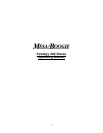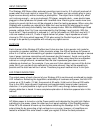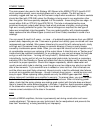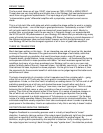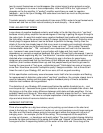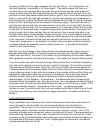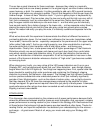
The ear has a great tolerance for these overtones - because they relate in a musically
consonant way and are are already present in the original signal, as either timbre overtones,
upper harmony or both. For example, it is often possible to add up to 20% second harmonic
to a single note before any change is audible. Then all that happens is that the ear hears the
timbre change.. it does not hear "distortion trash." If you're a guitar player or keyboardist try
this simple experiment. Play two notes, play the low one loudly and the high one very soft at
first, then increasingly loud, an octave apart at the same time. Notice how loudly you can
play the upper octave note before you can even hear it... and that what you do eventually
hear sounds mainly like a timbre change in the lower note -- not two separate notes. Now try
playing the same original note but this time also play a note two octaves plus one step
above. No matter how softly you play this note, it is distinctly audible and separate from the
original.
What we've done with this experiment is demonstrate the effects of different harmonics in
contrasting distortion types. You've heard how inoffensive the low order (sometimes called
"even order") harmonics can be... especially compared to the prominence of the upper order
(often called "odd order"). And as you might guess by now, tube amp distortion is primarily
low order while that of most transistor units is odd-higher order... and hence very
objectionable. Clearly then, a tube power amp with a higher percentage of Total Harmonic
Distortion actually can sound cleaner and clearer and much less harsh than a solid state
amp which carries a lower total distortion rating. It's not the total distortion that counts as
much as the distribution of distortion components: It's all but impossible to hear even a few
percent of 2nd harmonic distortion whereas a fraction of "high order" type becomes audible
as annoying hash.
When playing very loudly, you may notice all the LED power indicators are lit up on your
Strategy 400 - and yet we seriously doubt that you'll hear distortion - even though clipping
begins when the 0 db LED lights up. Two things are happening here: First, special care has
been devoted to avoiding high-order overtones and containing the Strategy's clipping
distortion to primarily 2nd harmonic. And second: The Strategy has high dynamic headroom
and can produce substantial extra undistorted power for short (but musically significant)
periods of time. Musical peaks - such as the attack of certain notes - are so highly dynamic
that they demand 20 to 50 times the average power produced by the amplifier to come
through unclipped. So good sound requires more than just plenty of brute power. It demands
good performance after ratings have been exceeded as well as before because some
clipping is almost unavoidable.
CONCLUSION
This discussion has concentrated on the extreme end of power performance because that's
where the differences between amplifier types are most noticeable. And, we expect, extreme
power performance is one big reason for your interest in the Strategy 400. Rest assured that
all those factors that enhance high performance are also benefits at other times. Thanks for
reading this far, we hope this explanation has bettered your understanding for the science --
and magic -- of great sound. Most of all, enjoy your music and enjoy your Strategy 400
Stereo.
8



